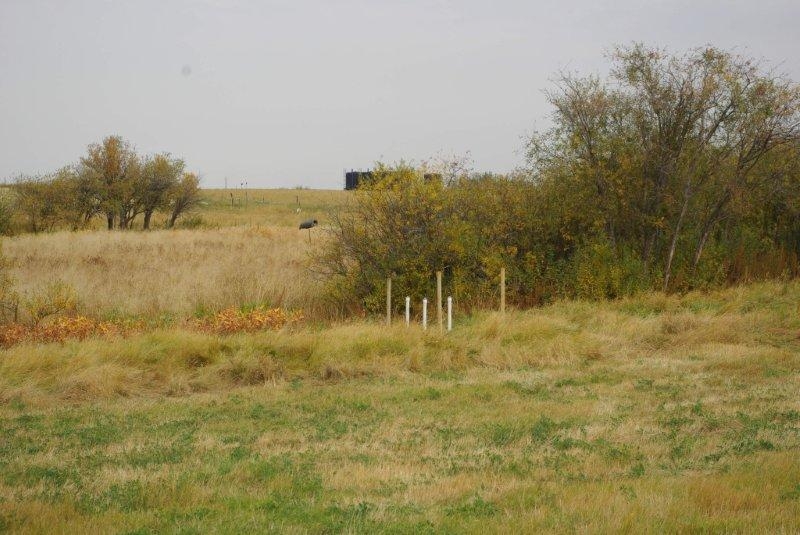Dung Beetle Research
Different dung beetles have differing life cycles and different effects on nutrient cycling in the environment. As part of an AESB project to characterize dung beetle species by ecoregion we have participated through provision of samples. Results are interesting so far. Beetle Backgrounder, Beetle Pictures

| Taxa | Oct. 16/12 |
| Aphodius fimetarius |
28 |
| Aphodius erraticus |
1 |
| Aphodius distinctus |
13 |
| Sphaeridium lunatum |
2 |
| Sphaeridium scarabaeoides |
1 |
Grass Cages
 In partnership with Cows and Fish and Alberta Sustainable Resources and Development we have placed/are placing grass cages to exclude grazing from specific sites on our ranch so we can determine plant litter accumulation, grazing pressure and through the use of transects the impact of grazing management strategies on plant species composition.
In partnership with Cows and Fish and Alberta Sustainable Resources and Development we have placed/are placing grass cages to exclude grazing from specific sites on our ranch so we can determine plant litter accumulation, grazing pressure and through the use of transects the impact of grazing management strategies on plant species composition.
Bale Grazing II
 AESB was interested in furthering their understanding of nutrient flows in bale grazing sites. This seemed a perfect fit to us to continue their earlier efforts. The project involved them drilling a series of wells throughout one water runway and back from the edge of a slough. Samples will be collected from these wells and analyzed for nutrient runoff and perforation into the soil profile.
AESB was interested in furthering their understanding of nutrient flows in bale grazing sites. This seemed a perfect fit to us to continue their earlier efforts. The project involved them drilling a series of wells throughout one water runway and back from the edge of a slough. Samples will be collected from these wells and analyzed for nutrient runoff and perforation into the soil profile.
Bale Grazing
 We are engaged with AESB (PFRA) in an applied research project to examine the benefits and nutrient flows associated with bale grazing. This process has involved extensive soil testing, the deployment of monitoring equipment for soil temperature and moisture effects, and feed testing.
We are engaged with AESB (PFRA) in an applied research project to examine the benefits and nutrient flows associated with bale grazing. This process has involved extensive soil testing, the deployment of monitoring equipment for soil temperature and moisture effects, and feed testing.
Bales were spaced at 12.5m on center and nutrient effects will be measured for 3 years, in an effort to demonstrate the optimal use of bale grazing as a restorative management technique.
Rake Bunching
We initiated a small project on our own after reading several publications on “rake bunching”. We cut and bunched hay with a steel wheel dump rake and are then grazing the piles. Results so far are impressive with costs down at $0.25 per day for grazing replacement heifers. We have continued with more acres in 2012.
Here are some photos from our various research projects.






